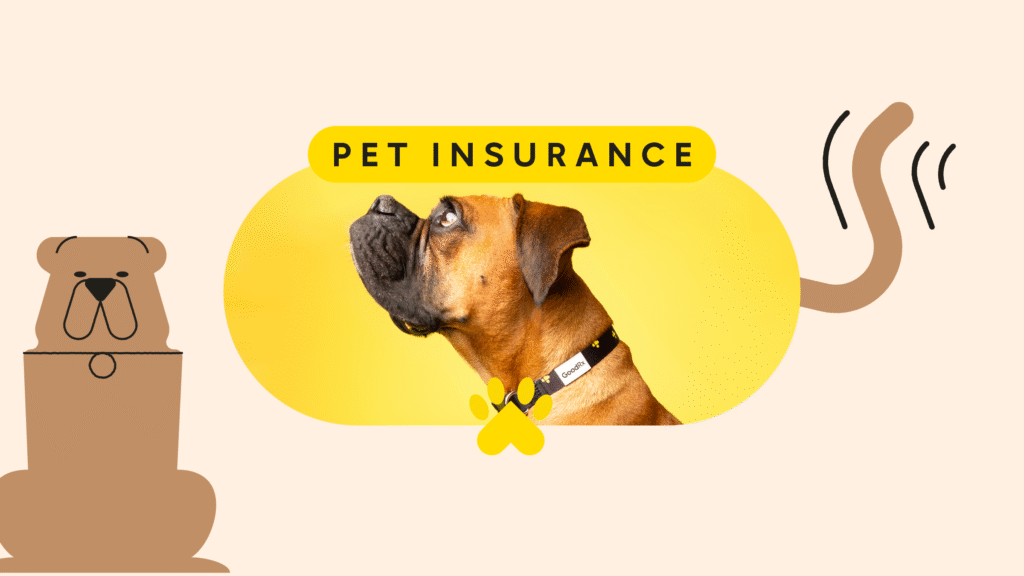Pets are like family, bringing joy, companionship, and sometimes a bit of chaos to our lives. But when your furry friend gets sick or injured, vet bills can add up fast, turning love into financial stress. In the USA, pet insurance is a growing solution to help pet owners manage these costs while ensuring their pets get the care they need. This article dives into what pet insurance is, why it’s important, the types of coverage available, and how to choose the right policy for your dog, cat, or other pet. We’ll also toss in some real-world examples, tips to save money, and common grammar mistakes to avoid when dealing with insurers. Let’s get started!
What is Pet Insurance?
Pet insurance is a type of insurance that covers veterinary costs for your pets, like dogs, cats, birds, or even exotic animals. It’s a contract between you and a insurance company: you pay monthly or yearly premiums, and in return, the insurer reimburses you for eligible vet expenses, like surgeries, medications, or emergency visits. It’s like health insurance for humans, but tailored for animals.
In 2025, the average cost of pet insurance in the USA is about $30-$70/month for dogs and $15-$40/month for cats, depending on the pet’s age, breed, and coverage level. For example, insuring a young, healthy Labrador might cost $40/month, while an older Persian cat with health issues could cost $60/month. About 4.5 million pets are insured in the USA, but that’s only 3-4% of all pets, according to recent data, meaning many owners are still paying vet bills out of pocket.
Why Pet Insurance Matters
Vet care isn’t cheap. A single emergency surgery, like fixing a broken leg, can cost $2,000-$5,000, and chronic conditions, like diabetes or cancer, can run $10,000 or more a year. Without insurance, these costs can force tough choices, like skipping treatment or going into debt. Pet insurance helps cover these expenses, so your pet gets the care they need without breaking the bank.
It also offers peace of mind. Knowing your covered for unexpected vet bills lets you focus on enjoying time with your pet. Plus, as pets age, they’re more likely to need costly care, and insurance locks in coverage before health issues arise. For instance, a 2-year-old dog might get affordable coverage, but waiting until they’re 10 could mean higher premiums or denied claims for pre-existing conditions.
Types of Pet Insurance Coverage
There’s different types of pet insurance plans, and each one offers a mix of coverage options. Here’s the main ones:
Accident-Only Coverage
This covers injuries from accidents, like broken bones, swallowed objects, or car accidents. It’s the cheapest option but doesn’t cover illnesses.
Pros: Low cost, great for young, healthy pets.
Cons: No coverage for illnesses, like infections or cancer.
Example: Your dog eats a sock, needing $3,000 surgery. Accident-only coverage reimburses you, minus the deductible.
Accident and Illness Coverage
This is the most popular type, covering accidents and illnesses, like allergies, infections, or chronic conditions. It’s more comprehensive but pricier.
Pros: Covers most vet costs, from emergencies to ongoing treatments.
Cons: Higher premiums, and pre-existing conditions are usually excluded.
Example: Your cat gets diagnosed with diabetes, costing $500/month for insulin. This plan covers most of it.
Wellness Coverage
This add-on covers routine care, like vaccinations, flea prevention, or annual checkups. It’s optional and not offered by all insurers.
Pros: Helps with predictable costs, like annual exams.
Cons: Increases premiums and may not save money if you rarely use it.
Exotic Pet Coverage
Some insurers, like Nationwide, cover exotic pets, like birds, reptiles, or rabbits, for accidents and illnesses.
Pros: Tailored for non-traditional pets.
Cons: Limited providers and higher costs.
How Pet Insurance Works
Getting pet insurance is pretty straightforward:
- Get a Quote: You provide details about your pet—age, breed, health history, and location. Insurers use this to calculate risk.
- Choose a Plan: Pick a policy with the coverage, deductible, and reimbursement level you want. Most plans reimburse 70-90% of eligible costs after a deductible (e.g., $100-$500).
- Pay Premiums: You pay monthly or yearly to keep the policy active. Miss payments, and your coverage might lapse.
- File a Claim: When your pet needs care, you pay the vet upfront, then submit a claim with receipts. The insurer reimburses you based on your plan.
- Underwriting: Insurers may review your pet’s health records. Pre-existing conditions, like a prior injury, are usually excluded.
One thing to watch out for is waiting periods. Most plans have a 14-day wait for illnesses or longer for conditions like hip dysplasia. If your pet gets sick during this time, it’s not covered.
Common Grammar Mistakes to Avoid
When filing claims or emailing insurers, grammar mistakes can make you look sloppy. Here’s some common errors:
- Misusing “affect” vs. “effect”: A policy can effect your pet’s care, but vet bills affect your budget. (Correct: affect is a verb, effect is a noun.)
- Subject-verb agreement: Premiums is based on your pet’s breed. (Correct: are because premiums is plural.)
- Missing hyphens: A 5 year old dog costs more. (Correct: 5-year-old dog.)
- Using “like” instead of “such as”: Plans like accident-only or wellness are available. (Correct: Plans such as accident-only or wellness.)
- Homophone errors: Your covered for vet bills. (Correct: You’re covered.)
These mistakes can slip into claims or emails, so double-check or use a tool like Grammarly.
Why You Need Pet Insurance
Here’s some key reasons pet insurance is worth it:
- Covers High Vet Costs: Emergency care or chronic illnesses can cost thousands. Insurance keeps you from choosing between your pet and your savings.
- Peace of Mind: Knowing your protected lets you focus on your pet’s health, not bills.
- Locks in Coverage: Insuring young, healthy pets means lower premiums and fewer pre-existing condition exclusions.
- Customizable Plans: You can tailor coverage to fit your budget and pet’s needs.
Costs of Pet Insurance
The cost of pet insurance depend on:
- Pet’s Age: Older pets cost more to insure. A 2-year-old dog might cost $30/month, while a 10-year-old costs $60/month.
- Breed: High-risk breeds, like Bulldogs with breathing issues, have higher premiums.
- Location: Urban areas or states with expensive vet care, like California, cost more.
- Coverage Level: Accident and illness plans cost more than accident-only. Wellness add-ons increase premiums.
- Deductible and Reimbursement: A $100 deductible with 90% reimbursement costs more than a $500 deductible with 70% reimbursement.
In 2025, expect to pay $30-$70/month for dogs and $15-$40/month for cats. For example, a healthy 3-year-old Lab in Texas might cost $45/month for accident and illness coverage with a $250 deductible and 80% reimbursement.
How to Choose the Right Policy
Picking the right pet insurance takes some thought. Here’s some steps:
- Assess Your Pet’s Needs: Consider your pet’s age, breed, and health. Young pets might need accident-only; older pets need illness coverage.
- Compare Quotes: Check insurers like Trupanion, Healthy Paws, or Petplan. Online tools give instant quotes.
- Check Coverage Details: Look for exclusions, waiting periods, and caps on payouts. Some plans limit coverage for hereditary conditions.
- Look for Discounts: Ask about multi-pet discounts or savings for paying annually.
- Review Insurer Ratings: Choose companies with strong reputations, like those rated by AM Best or customer reviews.
Real-World Example
Meet Jake, a 35-year-old pet owner in Florida with a 4-year-old Golden Retriever named Max. Jake buys an accident and illness policy from Healthy Paws for $40/month, with a $250 deductible and 80% reimbursement. When Max tears a ligament, needing $4,000 surgery, Jake pays the vet upfront, then files a claim. He pays the $250 deductible, and Healthy Paws reimburses $3,000 (80% of $3,750). Jake avoids a mistake by not writing “your pet’s covered” in his claim, using “you’re” correctly.
Common Myths About Pet Insurance
There’s some myths that confuse pet owners:
- Myth: Pet insurance is too expensive. Truth: Plans start at $15/month, and they save money compared to $5,000 vet bills.
- Myth: It covers everything. Truth: Pre-existing conditions and some routine care are excluded.
- Myth: You don’t need it for healthy pets. Truth: Accidents or sudden illnesses can happen anytime.
Tips to Save on Pet Insurance
Here’s ways to lower costs:
- Insure Early: Young, healthy pets get cheaper rates.
- Choose a Higher Deductible: A $500 deductible lowers premiums but means more out-of-pocket costs.
- Compare Plans: Shop around for the best deal. Some insurers offer multi-pet discounts.
- Skip Unnecessary Add-Ons: Wellness coverage might not be worth it if you budget for routine care.
- Maintain Pet Health: Regular checkups and a healthy diet can prevent costly conditions.
Final Thoughts
Pet insurance in the USA is a smart way to protect your furry family members and your wallet. Whether you choose accident-only for it’s affordability or a comprehensive plan for it’s coverage, the goal is to keep your pet healthy without financial stress. Don’t let grammar mistakes—like saying “your insured” instead of “you’re insured” or skipping hyphens in “accident only plan”—make you look careless when filing claims. By starting early, comparing quotes, and choosing a trusted insurer, you can find a policy that fits your budget and gives peace of mind.
For more details, check out resources like the North American Pet Health Insurance Association or NerdWallet’s 2025 pet insurance guides. Ready to protect your pet? Start shopping for quotes today—your furry friend deserves it!


